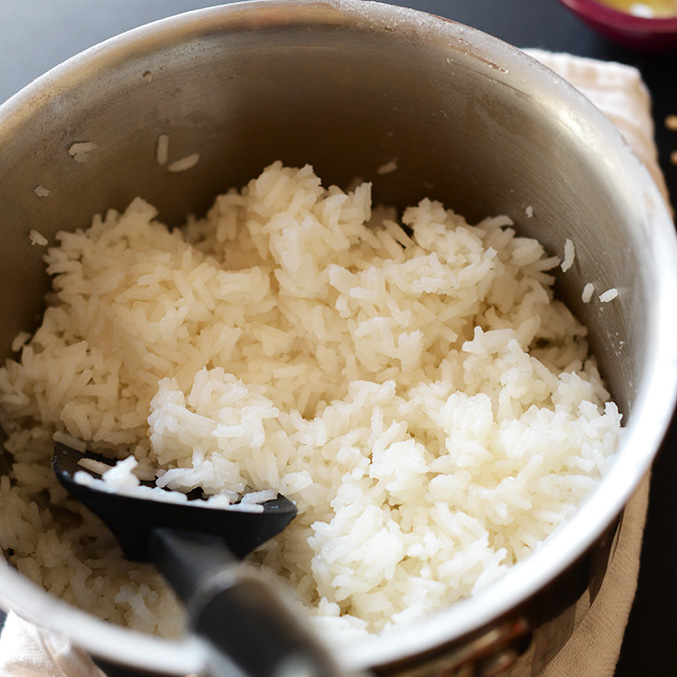How to Cook Rice: A Comprehensive Guide

Cooking rice is a fundamental skill in many cuisines around the world. Whether you prefer fluffy white rice, aromatic jasmine rice, or nutty brown rice, mastering the art of cooking rice ensures a versatile and delicious staple for countless dishes. This comprehensive guide will walk you through various methods of cooking rice, from the basic stove-top method to using a rice cooker, ensuring you achieve perfect rice every time.
Types of Rice
Before diving into cooking methods, it’s essential to understand the different types of rice available:
- White Rice: The most common type of rice, with a neutral flavor and fluffy texture when cooked.
- Brown Rice: A whole grain rice with a nuttier flavor and chewier texture compared to white rice. It requires longer cooking times and more water.
- Basmati Rice: A long-grain rice known for its fragrant aroma and fluffy texture when cooked. It is commonly used in Indian and Middle Eastern cuisines.
- Jasmine Rice: Another long-grain rice known for its floral aroma and slightly sticky texture when cooked. It is popular in Southeast Asian cuisines.
- Arborio Rice: A short-grain rice used primarily in risotto due to its high starch content, which creates a creamy texture when cooked.
Tools and Ingredients Needed
To cook rice, gather the following tools and ingredients:
- Rice: Choose your preferred type of rice based on the dish you plan to make.
- Water or Broth: Use water for basic rice, or enhance the flavor with broth for added richness.
- Salt: Optional, but it enhances the flavor of the rice.
- Rice Cooker or Pot with Lid: Depending on the cooking method you choose.
- Measuring Cup: For precise measurements of rice and water.
Cooking Methods
1. Stove-Top Method
Steps:
- Rinse Rice: Rinse the rice under cold water until the water runs clear to remove excess starch.
- Measure Water: Use the ratio of 1 cup of rice to 1.5 to 2 cups of water, depending on the type of rice (check specific package instructions).
- Boil Water: Bring the water to a boil in a pot with a tight-fitting lid.
- Add Rice: Add the rinsed rice and a pinch of salt to the boiling water.
- Simmer: Reduce the heat to low, cover the pot with the lid, and simmer for about 15-20 minutes (adjust timing based on the type of rice).
- Fluff and Serve: Once the water is absorbed and the rice is tender, fluff it with a fork and let it rest for a few minutes before serving.
2. Rice Cooker Method
Steps:
- Rinse Rice: Rinse the rice under cold water until the water runs clear.
- Add Rice and Water: Transfer the rinsed rice to the rice cooker. Use the appropriate water-to-rice ratio recommended by the rice cooker manufacturer.
- Start Cooking: Close the lid of the rice cooker and select the appropriate setting (usually “Cook” or “Start”).
- Wait for Completion: The rice cooker will automatically switch to “Keep Warm” mode once the rice is cooked.
- Fluff and Serve: Open the rice cooker lid, fluff the rice with a fork, and serve immediately or keep warm until ready to serve.
3. Instant Pot Method (Pressure Cooker)
Steps:
- Rinse Rice: Rinse the rice under cold water until the water runs clear.
- Add Rice and Water: Transfer the rinsed rice to the Instant Pot. Use the ratio of 1 cup of rice to 1 to 1.25 cups of water, depending on the type of rice.
- Close Lid and Set: Close the lid of the Instant Pot, ensure the valve is set to “Sealing,” and select the “Manual” or “Pressure Cook” setting. Set the timer according to the type of rice (e.g., 3 minutes for white rice, 22-25 minutes for brown rice).
- Natural Release: Allow the pressure to release naturally for 10 minutes after cooking (for white rice) or 10-15 minutes (for brown rice). Then, carefully release any remaining pressure by turning the valve to “Venting.”
- Fluff and Serve: Open the lid once the pressure has fully released, fluff the rice with a fork, and serve.
Tips for Perfect Rice
- Rinse the Rice: Rinsing rice removes excess starch, resulting in fluffier grains.
- Use the Right Ratio: Follow the recommended water-to-rice ratio for the type of rice you are cooking.
- Don’t Peek: Once you cover the pot or close the rice cooker lid, resist the urge to open it until the cooking time is complete to avoid steam escape.
- Let It Rest: Allow the rice to rest for a few minutes after cooking to finish steaming and evenly distribute moisture.
Flavor Variations
- Add Flavorings: Enhance the flavor of your rice by cooking it in broth instead of water or adding spices such as bay leaves, cinnamon sticks, or cardamom pods.
- Stir in Ingredients: Mix in ingredients like diced vegetables, herbs, or nuts after cooking for added texture and flavor.
Conclusion
Cooking rice is a versatile skill that opens up a world of culinary possibilities. Whether you’re making a simple side dish, a comforting bowl of risotto, or sushi rice for homemade sushi rolls, mastering the art of cooking rice ensures delicious and satisfying meals every time. By following this comprehensive guide and experimenting with different types of rice and flavorings, you can confidently cook rice to perfection and enjoy its versatile goodness in various dishes. Embrace the process, explore different cooking methods, and savor the satisfaction of serving perfectly cooked rice to family and friends.







